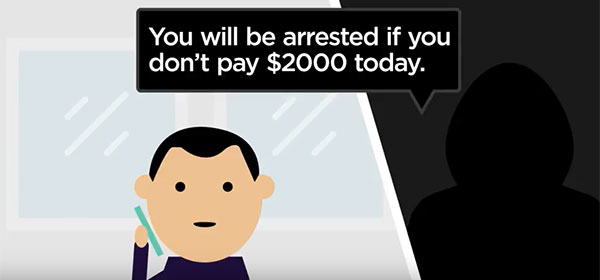Scams are becoming so sophisticated and difficult to spot, as evident in the extraordinary amount of money lost to scammers in the past year.
For the first time ever, the total cost of scams has broken the $300 million mark, with 200,000 scams costing Australians around $340 million in 2017.
The $40 million increase on 2016 totals is the highest number since the Australian Competition and Consumer Commission (ACCC) began its Targeting scams report nine years ago.
According to the ACCC, the most commonly reported scams were phishing, identity theft and false billing scams, with 55,000 reports leading to losses of over $4.6 million in 2017.
However, the ACCC says the true cost of these kinds of scams may be felt later, should a scammer use your personal and banking information for future use.
Investment scams took the biggest scalps, with losses totalling $64 million. Dating and romance scams were the second biggest swindle, taking in $42 million.
“It’s very worrying that Australians are losing such extraordinary amounts to scammers. Based on just the reports provided to the ACCC, victims are losing an average of $6500. In some cases people have lost more than $1 million,” said ACCC Deputy Chair Delia Rickard.
“Some scams are becoming very sophisticated and hard to spot. Scammers use modern technology like social media to contact and deceive their victims. In the past few years, reports indicate scammers are using aggressive techniques both over the phone and online.”
Men were duped the most, losing over $51 million, with women losing just under $38 million. Those aged 55 to 64 were responsible for 29 per cent of the total losses and those aged 65 and over lost 23 per cent of the total, although they were the most vigilant, contributing 26 per cent of the total reports.
The top form of contact from a scammer was by phone (40 per cent), then email (31 per cent) and SMS or text message (12 per cent).
With this week being Scams Awareness Week, the ACCC is calling on Australians to be on the lookout to “Stop and check: is this for real?” any time they feel that a call, email or text message looks suspicious.
Scamwatch, the ACCC’s scam reporting website, is also seeking information on anyone pretending to be from well-known government organisations or businesses.
Last year, Scamwatch received 33,000 reports of this type of scam, where impersonators call and threaten people with ultimatums such as cancelled payments or services, fines for late payments, court action or even arrests for previously unknown ‘infractions’.
In 2017, over $4.7 million was reported lost and more than 2800 people gave their personal information to these threat-based impersonation scams.
“These scams can be very frightening. For example, scammers will impersonate the Australian Taxation Office and threaten people with immediate arrest unless they pay an outstanding tax bill. They may pretend to be from Telstra to try to hack into your computer or from Centrelink promising extra payments in return for a ‘fee’,” said Ms Rickard.
“Scammers scare us or butter us up with promises of cash because they know it clouds our judgement. People get so worried about being arrested they don’t question if the person threatening them is genuine.
“If you’re being threatened, take a deep breath, and ask yourself if the call makes sense. The ATO will never threaten you with immediate arrest; Telstra will never need to access your computer to ‘fix’ a problem; and Centrelink will never require a fee to pay money it owes you. Finally, none of these organisations will ask you to pay using iTunes gift cards.
“If something doesn’t feel right, hang up the phone or hit delete. If the person said they were, for example, from Telstra or the ATO, find the phone number for that organisation online or in the phone book, call them and let them know about the call you received. They’ll let you know if it’s genuine or a scam.”
Visit www.scamwatch.gov.au to report any scams or suspicious activity.
Were you the victim of a scam last year? Or do you think you may have been contacted by a scammer? How did you handle this situation?
Related articles:
Why scammers target the elderly
Phone scammers getting sneakier
Inside a scammer’s bag of tricks

